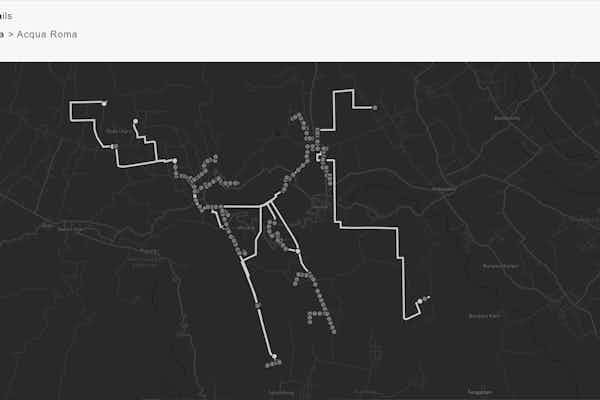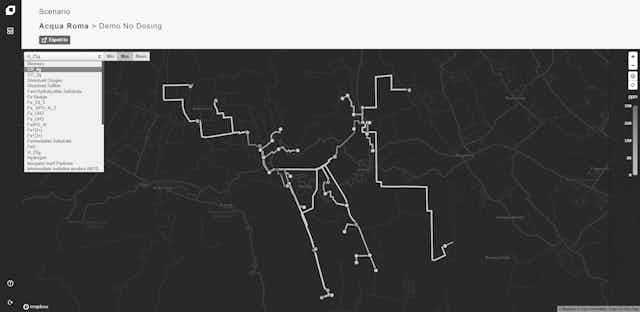Safe, efficient, reliable and sustainable water.
Data driven insights that provide value at every step of the way from process design, operating water treatment plants and managing sewer networks.

Water is critical to our daily life and the world’s prosperity
In recent years, rapid urbanisation and extreme climate change related events such as droughts and floods, have intensified water issues around the world. In addition, ageing infrastructure and increased costs throughout the supply chain have urged the water industry to operate more efficiently. In today’s technology and data driven world, community expectations around water and wastewater services and performance transparency from utilities continue to increase.
EVS Water is a suite of innovative, science-based design and asset management software for the water industry. Our technologies are powered by deterministic modelling and machine learning to help engineers and operators address major business, operational, customer and environmental challenges – faster and more accurately with actionable insights.
EVS Water Products
Envirosuite's powerful science-based digital twin technologies powered by deterministic modelling and machine learning.
We can help you achieve
Operational improvements powered by deterministic modelling and machine learning
By using deterministic modelling and machine learning approaches, we help water utilities and operators increase efficiency, mitigate risks, optimise operations, reduce costs, improve asset performance, while providing reliable services to customers to achieve safety and environmental outcomes.

Managing odours and corrosion proactively and efficiently
Envirosuite’s sewer network modelling product, SeweX creates a digital twin of the sewer network by using network, hydraulic and wastewater quality data, to predict where methane and hydrogen sulphide generation will occur, helping sewer network operators decide the optimal operational strategy.

Reducing capital and operational costs while mitigating risks
Using a digital twin with virtual representations to perform digital what-if scenarios, EVS Water Plant Optimiser eliminates guesswork from the water treatment process. It also recommends the optimal operational strategy to reduce energy and chemical consumption and extend asset life.

Improved safety and environmental outcomes
By predicting where methane and hydrogen sulphide generation will occur, SeweX helps understand greenhouse gas emissions while improving the safety of sewer network field operators and the community.
Digital twin technology for multiple applications in the water industry
Our technology supports operators at desalination plants, sewer networks and drinking water treatment and industrial water treatment plants.
Driving operational improvements, cost optimisation and environmental outcomes with data-driven insights from deterministic modelling and machine learning.
Getting started
Book a Demo
Our team of specialists can answer any questions you have about the design, operational or environmental challenges that you are experiencing.
Solution design
Let us map out your priorities to understand challenges you are facing and help you select the best solution for your needs.
Implement
We will work with you to implement the best solution, demonstrate performance and ensure the foundations are set for a successful ongoing collaboration.
Ready to talk?
Learn more about EVS Water news and latest insights
FAQs
Here are answers to common questions about EVS Water. Reach out to our team today if you don't see the answer you are looking for.
Currently, EVS Water operates only in Amazon Web Services (AWS) infrastructure, as it is tightly coupled to AWS capabilities for machine learning and data science. There are some possibilities for hosting some data locally, but these are highly dependent on specific project requirements, would be considered and would need to be discussed with our data management team.
EVS Water uses recurrent neural networks (RNN) powered by TensorFlow and Keras to calibrate models around a deterministic baseline. These tools have been chosen as they are widely accepted frameworks for applying RNN to challenges requiring identification of patterns in complex data sets. These frameworks are production-focused and integrated into the source code to enable accurate forecasts for EVS Water applications and allow for relatively rapid implementation and processing times. Input features to the RNN may include Feed/Coagulation pH, DOC, UV254, Temperature, Feed/Lamella Overflow Turbidity and coagulant dose, using both existing and a vendor installed instruments.
Sorption Capacity used in the deterministic model is also further calibrated by this RNN model to site specific conditions. The detailed design of the RNN models is developed as a result of close engagement with the customer and site personnel and depends on the design of the plant and available monitoring data.
We use a procedure for forecasting time series data based on an additive model where non-linear trends are fit with yearly, weekly, and daily seasonality, plus holiday effects. It works best with time series that have strong seasonal effects and several seasons of historical data. It is also robust to missing data and shifts in the trend, and typically handles outliers well.
The deterministic baseline for coagulation recommendations are based on a number of key models including a modified version of the Edwards (1997) Langmuir based coagulation model which is developed specifically for representing enhanced coagulation using aluminium and ferric salt based coagulants, considered the most accurate of the available models for DOC removal during coagulation (Tseng and Edwards, 1999).
The key inputs for this model are feed DOC [mg/L] and feed/coagulation pH which lead to a prediction of coagulant dose [mg/L], based on a recent inorganic analysis or online alkalinity measurement if available.
PIDs, PFDs, monitoring points, representative monitoring data, dosing locations, equipment datasheets will be required to be shared at the start of the project. Data for nominated monitoring points will need to be shared at least daily during the operational phase of the project with protocols agreed at the start of the project.
To facilitate an evaluation of financial benefits, average unit cost of chemicals, electricity consumption, solid waste disposal and labour cost for the plant will be requested at the start of the project.
about your water treatment software requirements.
